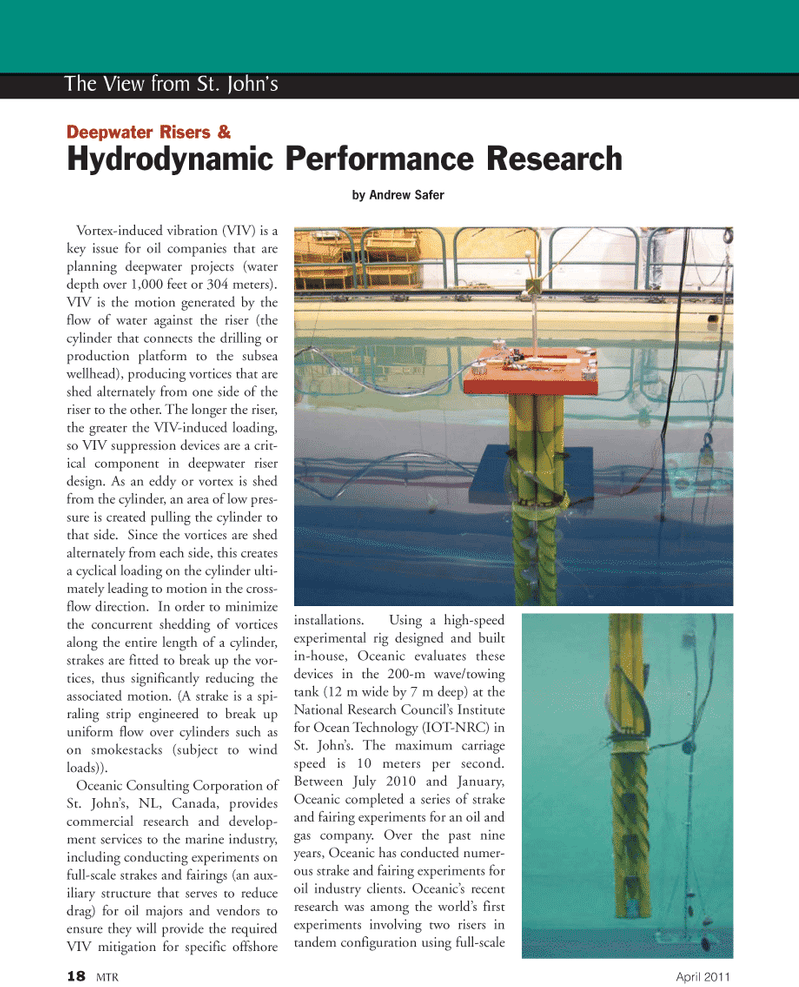
Page 18: of Marine Technology Magazine (April 2011)
Oil & Gas SubSea Monitoring
Read this page in Pdf, Flash or Html5 edition of April 2011 Marine Technology Magazine
18 MTR April 2011
The View from St. John’s
Vortex-induced vibration (VIV) is a key issue for oil companies that are planning deepwater projects (water depth over 1,000 feet or 304 meters).
VIV is the motion generated by the flow of water against the riser (the cylinder that connects the drilling or production platform to the subsea wellhead), producing vortices that are shed alternately from one side of the riser to the other. The longer the riser, the greater the VIV-induced loading, so VIV suppression devices are a crit- ical component in deepwater riser design. As an eddy or vortex is shed from the cylinder, an area of low pres- sure is created pulling the cylinder to that side. Since the vortices are shed alternately from each side, this creates a cyclical loading on the cylinder ulti- mately leading to motion in the cross- flow direction. In order to minimize the concurrent shedding of vortices along the entire length of a cylinder, strakes are fitted to break up the vor- tices, thus significantly reducing the associated motion. (A strake is a spi- raling strip engineered to break up uniform flow over cylinders such as on smokestacks (subject to wind loads)).
Oceanic Consulting Corporation of
St. John’s, NL, Canada, provides commercial research and develop- ment services to the marine industry, including conducting experiments on full-scale strakes and fairings (an aux- iliary structure that serves to reduce drag) for oil majors and vendors to ensure they will provide the required
VIV mitigation for specific offshore installations. Using a high-speed experimental rig designed and built in-house, Oceanic evaluates these devices in the 200-m wave/towing tank (12 m wide by 7 m deep) at the
National Research Council’s Institute for Ocean Technology (IOT-NRC) in
St. John’s. The maximum carriage speed is 10 meters per second.
Between July 2010 and January,
Oceanic completed a series of strake and fairing experiments for an oil and gas company. Over the past nine years, Oceanic has conducted numer- ous strake and fairing experiments for oil industry clients. Oceanic’s recent research was among the world’s first experiments involving two risers in tandem configuration using full-scale
Deepwater Risers &
Hydrodynamic Performance Research by Andrew Safer

 17
17

 19
19
